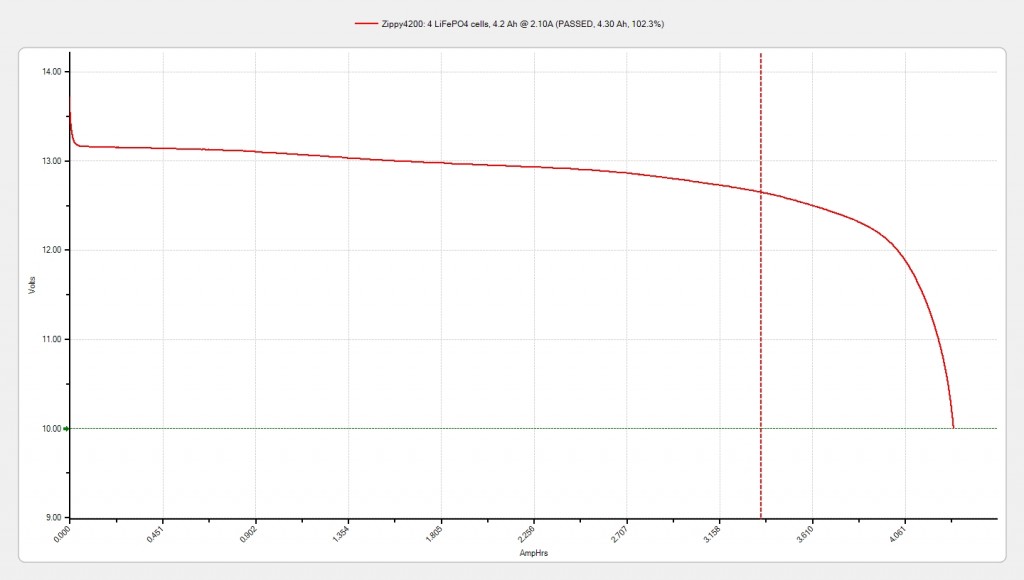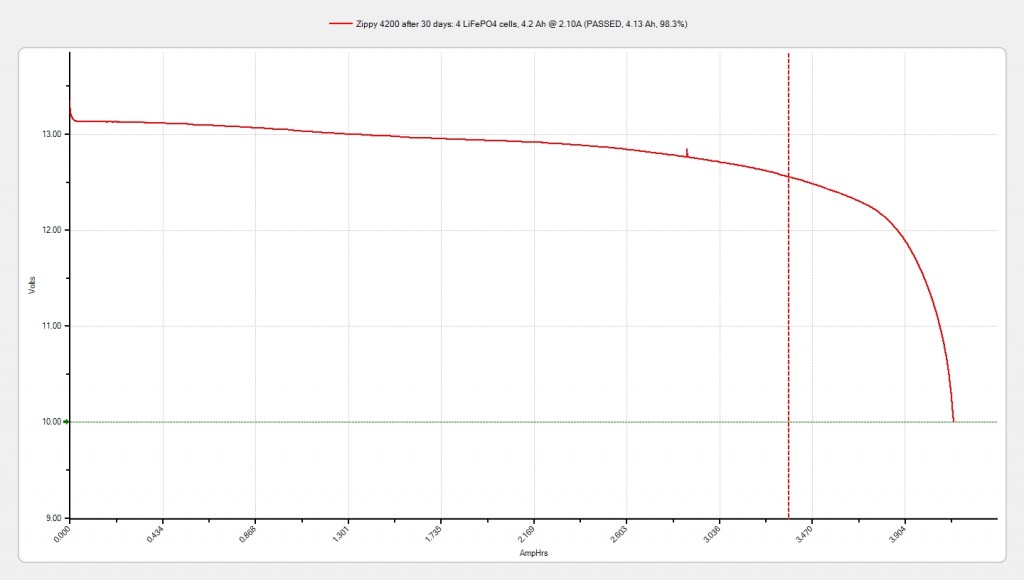A month ago I published some test results indicating a Zippy LiFe 4200 battery did have a capacity near its manufacturer’s claims (in fact slightly better than the claim at a C/2 discharge rate (2.1 Amps). That original curve is reproduced here:
After completing the reference test above, I fully charged the battery at a “C” rate (4.2 Amps), then let it sit idle for a month. Finally I discharged the battery at a C/2 rate (2.1 Amps), which produced the following discharge curve:
The conclusion is that the Zippy 30C Series 4200 High Discharge LiFe Battery lost about 4% of its capacity due to self-discharge during a 30-day storage period. That is a fair result, but not great. A “typical” LiFePO4 battery will lose about 2% of its capacity per month. The Zippy battery was about 2x that loss rate. That might be acceptable given the relatively low price of the Zippy batteries. Testing of my relatively old K2Energy battery indicated a self-discharge of less than 1% per month, for example. But on a watt-hour basis, the Zippy battery is about 1/2 the cost of the K2 Energy battery.










